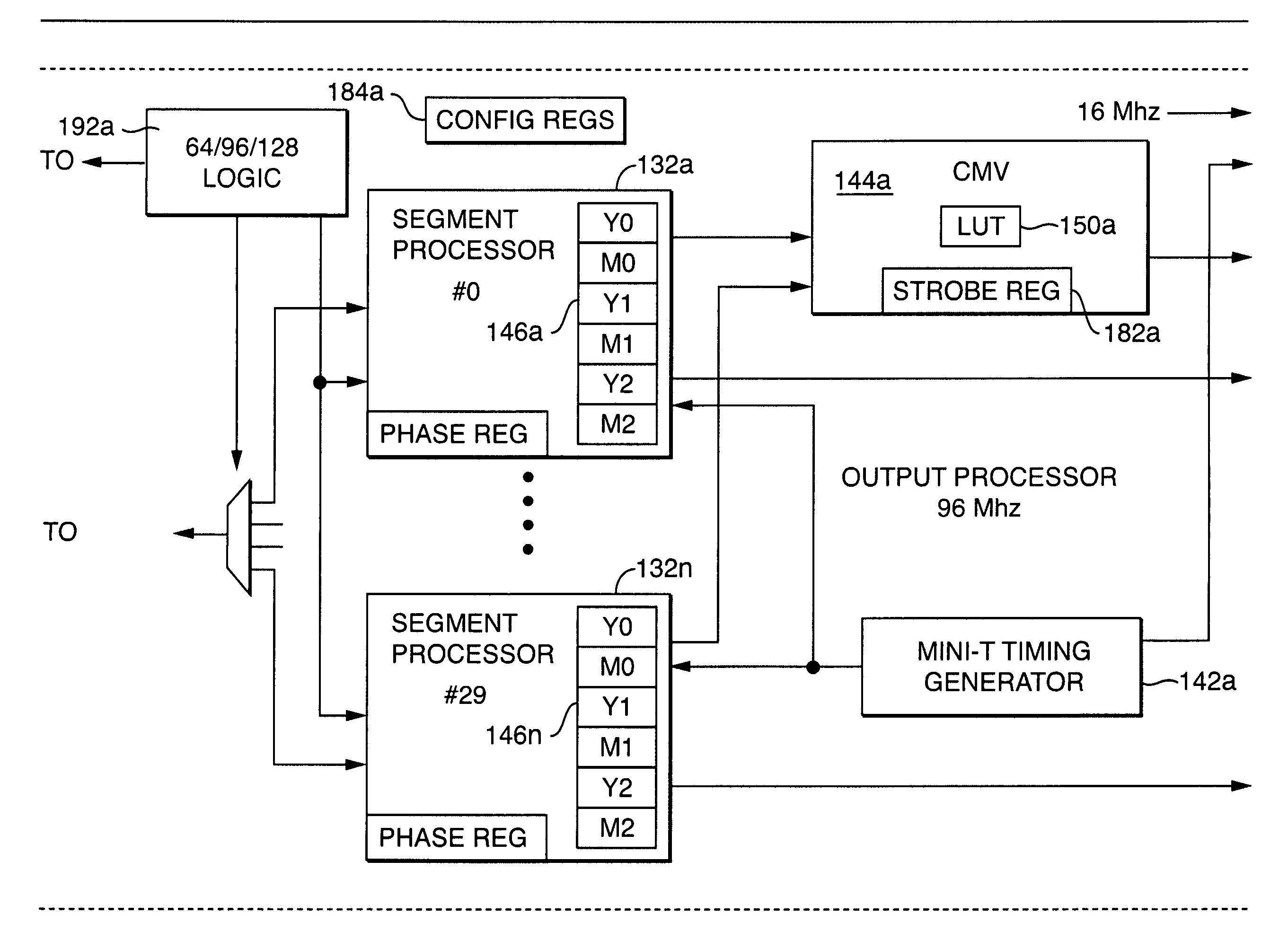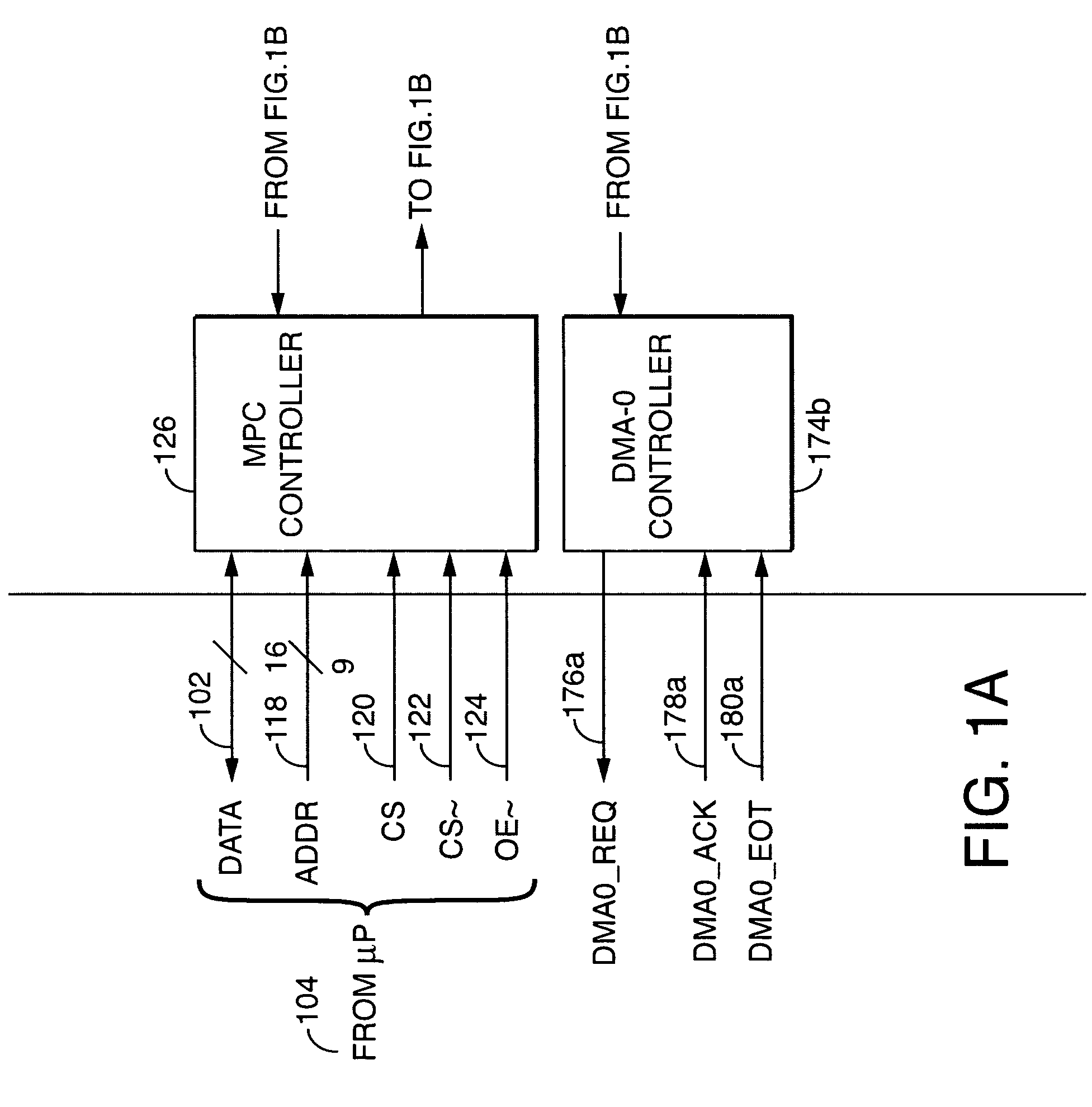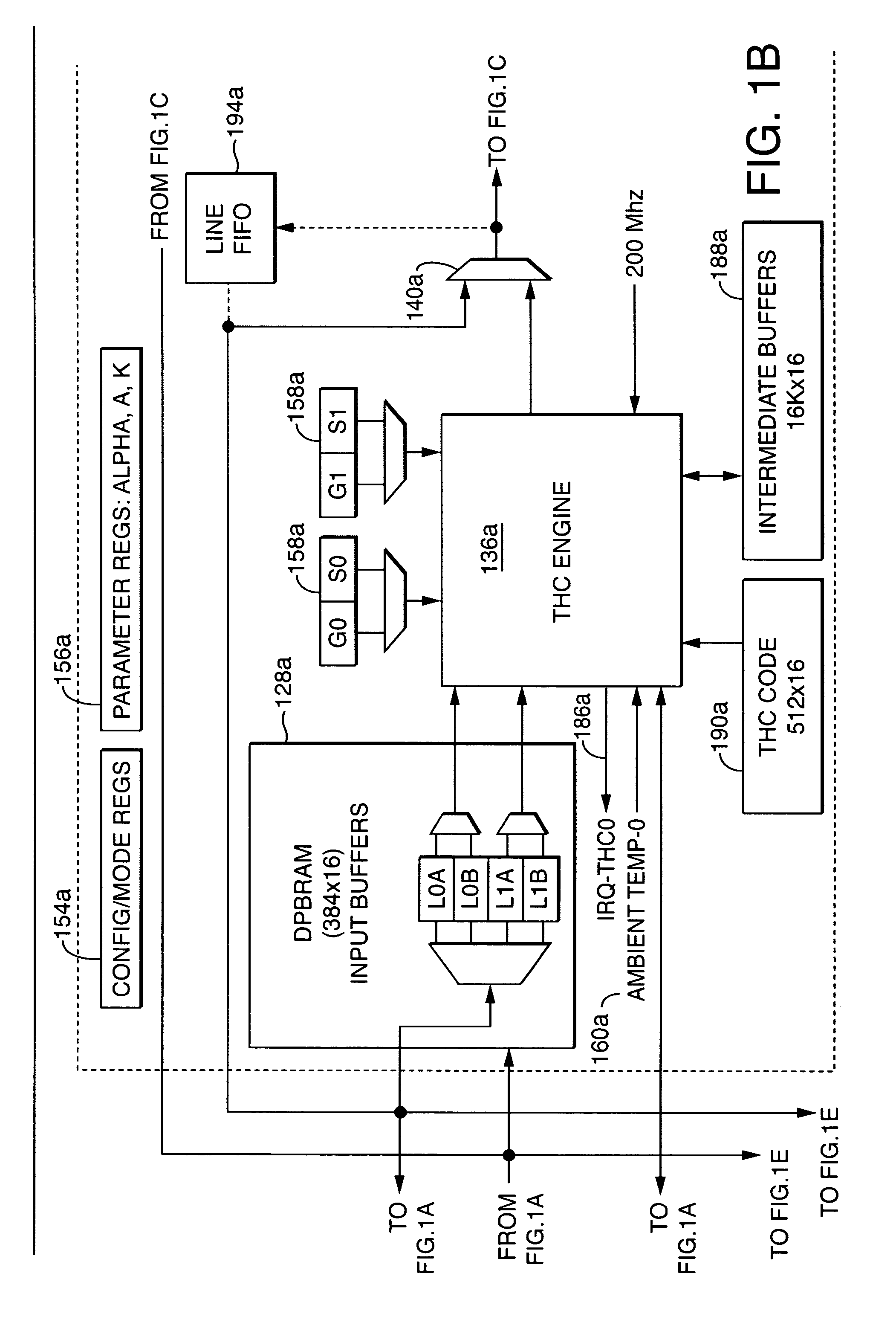Parametric programmable thermal printer
a thermal printer and parametric technology, applied in printing and other directions, can solve the problems of undesirable differences in rendering intensity, difficult to achieve, and difficult to achieve the effect of retaining hea
- Summary
- Abstract
- Description
- Claims
- Application Information
AI Technical Summary
Benefits of technology
Problems solved by technology
Method used
Image
Examples
Embodiment Construction
[0022]A parametric programmable thermal printer is disclosed. The printer may include a controller that performs functions such as thermal history control and common mode voltage correction. The controller may be implemented in an integrated programmable medium such as a Field-Programmable Gate Array (FPGA). Functions performed by the controller may be parameterized, and parameter values may be stored in registers. The controller may be used with a different thermal printer by changing the parameter values and / or reprogramming the programmable medium, and without otherwise redesigning or remanufacturing the controller.
[0023]Referring to FIGS. 1A-1J, block diagrams are shown of a thermal print head controller 100 according to one embodiment of the present invention. FIGS. 1A-1J may be referred to collectively herein as FIG. 1. Referring to FIG. 2, a block diagram is shown of a printer 200 including the controller 100 according to one embodiment of the present invention. In general, t...
PUM
 Login to View More
Login to View More Abstract
Description
Claims
Application Information
 Login to View More
Login to View More - R&D
- Intellectual Property
- Life Sciences
- Materials
- Tech Scout
- Unparalleled Data Quality
- Higher Quality Content
- 60% Fewer Hallucinations
Browse by: Latest US Patents, China's latest patents, Technical Efficacy Thesaurus, Application Domain, Technology Topic, Popular Technical Reports.
© 2025 PatSnap. All rights reserved.Legal|Privacy policy|Modern Slavery Act Transparency Statement|Sitemap|About US| Contact US: help@patsnap.com



